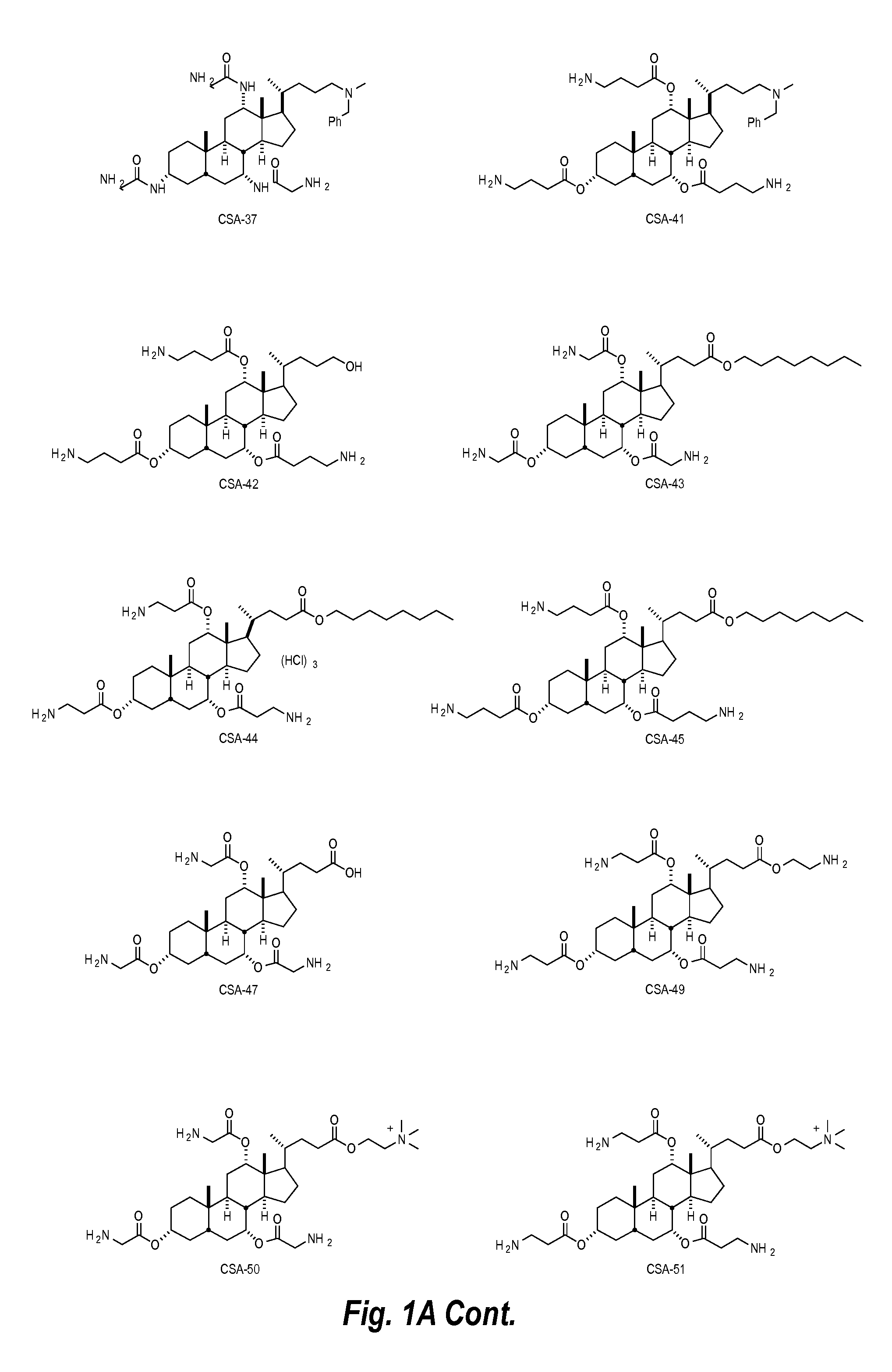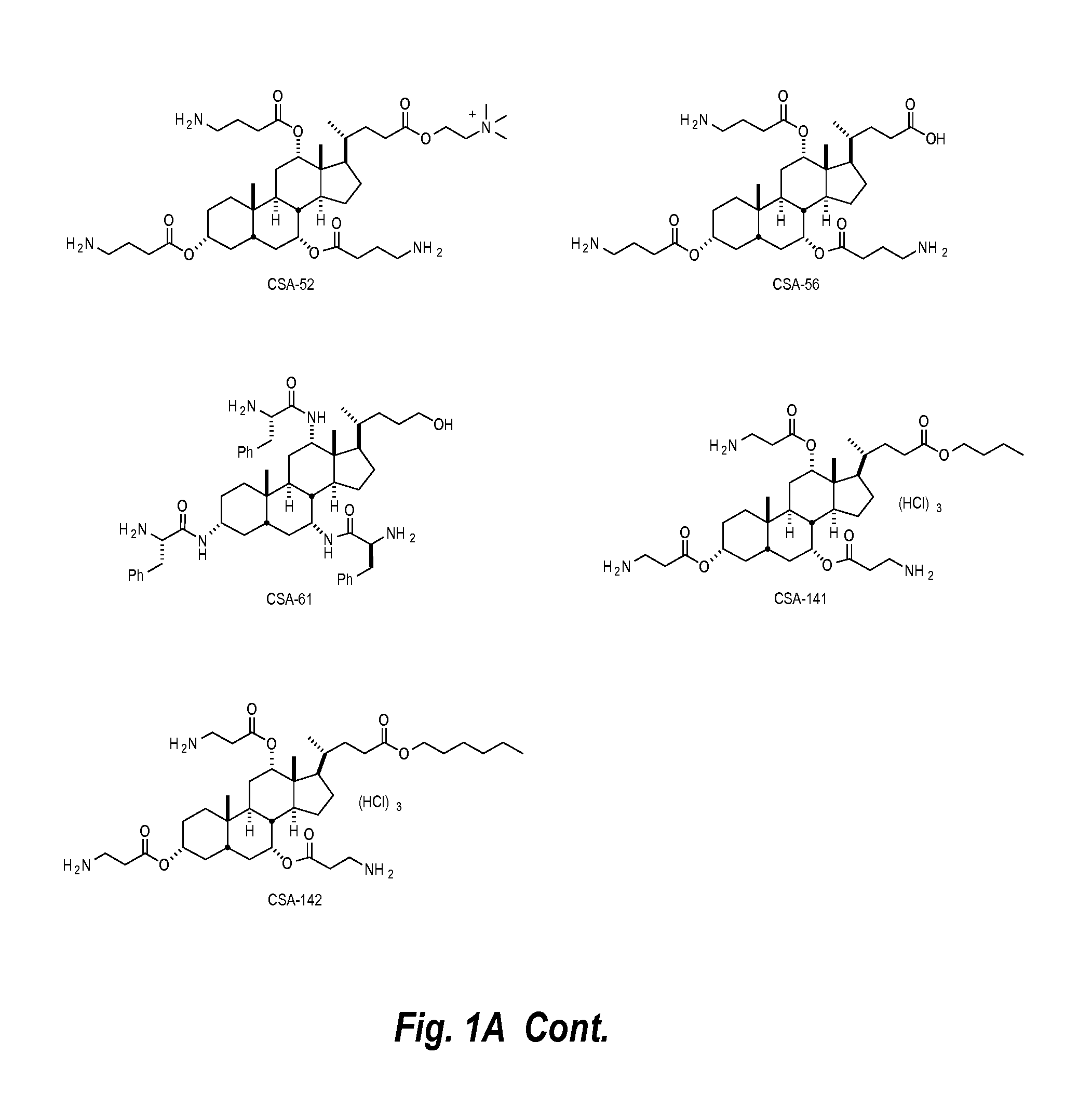Anti-microbial food processing compositions including ceragenin compounds and methods of use
- Summary
- Abstract
- Description
- Claims
- Application Information
AI Technical Summary
Benefits of technology
Problems solved by technology
Method used
Image
Examples
example 1
[0072]A study was performed to determine the effectiveness of an anti-microbial rinse composition including relatively low concentrations of a ceragenin compound in controlling growth of bacteria and extending shelf-life of a poultry food product. Three different wash compositions were prepared. Aqueous wash composition 1 (the control) included no ceragenin compound or other anti-microbial agent. Aqueous wash composition 1 was simply tap water. Aqueous wash composition 2 included a 50 ppm ceragenin compound concentration by weight in tap water, and had a pH of 6.5. Aqueous wash composition 3 included a 100 ppm ceragenin compound concentration by weight in tap water, and had a pH of 6.5. The ceragenin compound employed was CSA-44. Poultry carcasses (chicken carcasses) were dipped (e.g., immersed) for 30 seconds into the given wash composition and mechanically agitated to mimic the action of a finishing chiller used in commercial processing. After the 30 second application time, the c...
examples 2-3
[0076]Example 2 was performed to determine the effectiveness of an anti-microbial wash composition including a ceragenin compound in controlling growth of Salmonella bacteria by fighting off a Salmonella inoculation. Example 3 was similarly performed to determine the effectiveness of the wash composition in controlling growth of Campylobacter bacteria by fighting off a Campylobacter inoculation. Examples 2 and 3 simulate the effectiveness of the present anti-microbial wash compositions to kill Salmonella and Campylobacter on a poultry carcass where the poultry carcass has become contaminated with Salmonella bacteria or Campylobacter bacteria.
[0077]A total of 15 poultry carcasses (chicken carcasses) were sampled for these tests. The 15 poultry carcasses were divided into five groups of three each. Three carcasses were left untreated to serve as a negative control in order to observe natural levels of bacteria present on the carcass. The remaining 12 carcasses were then inoculated wit...
examples 4-5
[0084]Examples 4 and 5 describe treatments of processed broiler carcasses noculated with approximately 10̂6 Salmonella and Campylobacter, respectively. Examples 4 and 5 illustrate the time dependence of the effectiveness of ceragnin compounds. Specifically, ceragenin compounds show high levels of activity over time.
[0085]Carcasses were treated in a post-chill decontamination tank with 50, 100, 250 or 500 ppm CSA. There were 20 carcasses per treatment with a total of 2 replications. Dwell time for the application was 23 seconds which is consistent with industry practices. Both positive (no treatment) and negative (no inoculation and no treatment) treatments were included. The 10̂6 inoculum level is high, but is necessary to validate a 2 log reduction. Salmonella presence on processed broilers is low; however, Campylobacter can be as high as 1.8 logs. Therefore a 2 log reduction is targeted to eliminate naturally occurring levels of target pathogens on processed poultry. Rinse samples...
PUM
 Login to View More
Login to View More Abstract
Description
Claims
Application Information
 Login to View More
Login to View More - R&D
- Intellectual Property
- Life Sciences
- Materials
- Tech Scout
- Unparalleled Data Quality
- Higher Quality Content
- 60% Fewer Hallucinations
Browse by: Latest US Patents, China's latest patents, Technical Efficacy Thesaurus, Application Domain, Technology Topic, Popular Technical Reports.
© 2025 PatSnap. All rights reserved.Legal|Privacy policy|Modern Slavery Act Transparency Statement|Sitemap|About US| Contact US: help@patsnap.com



